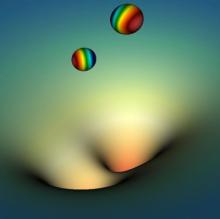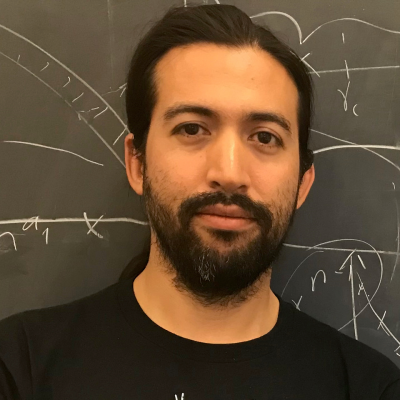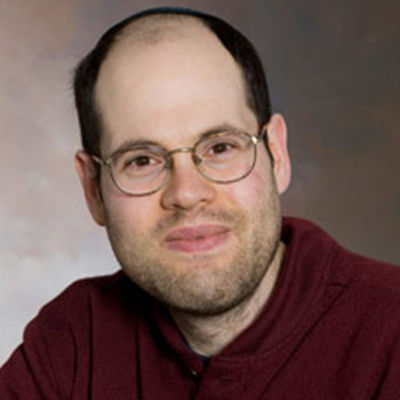
In the theory of general relativity, there is no gravitational force, per se, but rather objects appear to move on curved trajectories,like the motion of the planets around the sun, because spacetime itself is curved. The amount that spacetime is curved depends on, among other things, the amount of matter present in a given region. Thus the sun strongly curves the space around it, while a baseball has hardly any effect on the surrounding space. These distortions of spacetime are described by a 10 component tensor, known as the spacetime metric. Perhaps one the most important consequences of general relativity is that binaries of black holes and neutron stars will radiate a new form of energy, gravitational waves, which will cause their orbits to inspiral; leading to a terrific blast of energy released during a final catastrophic plunge. These gravitational waves then propagate through space and may eventually be observed by LIGO.
Numerical relativity is the science of numerically simulating the predictions of the theory of general relativity on a supercomputer. This includes modeling the mergers of binaries containing black holes and neutron stars, accretion disks in the ultrarelativistic regime, and stellar collapse, among others. Here at RIT, we use a suite of numerical relativity codes, including adaptive mesh refinement algorithms, and sophisticated mesh geometries in order to make our simulations accurate and practical.
The RIT's Numerical Relativity group is one of the largest and internationally renown groups in the modeling and simulation of compact binaries in extreme astrophysical environments. The group contributed to the 2005's breakthrough in this field with the moving puncture approach, which has opened new frontiers in gravitational-wave astrophysics. The moving puncture approach has permitted the first calculations gravitational radiation from merging black holes with arbitrary masses and spins, the discovery of large gravitational-radiation recoils, up to 5000 km/s, from merging spinning supermassive black-holes, the study of spin dynamics effects, such as spin-flips, precession and hang-up orbits and extreme mass-ratio binaries.
The LIGO paper prominently cites 2005 landmark research on binary black hole mergers led by Manuela Campanelli, director of RIT’s Center for Computational Relativity and Gravitation. Based on this milestone work from a decade ago, RIT researchers at the center, Professor Carlos Lousto, and post-doc, James Healy, numerically modeled the merger of a pair of black holes and simulated gravitational waveforms. The actual wave patterns LIGO detected on Sept. 14, 2015, matched the simulations Lousto and Healy had created. The contributions are recognized in Kip S. Thorne Nobel Lecture and in the Scientific Background on the Nobel Prize in Physics 2017.
The original moving puncture paper, “Accurate Evolutions of Orbiting Black-Hole Binaries without Excision”, was also highlighted by the APS as one of the landmark papers of the century on the subject of general relativity, starting with a contribution from Einstein himself.












